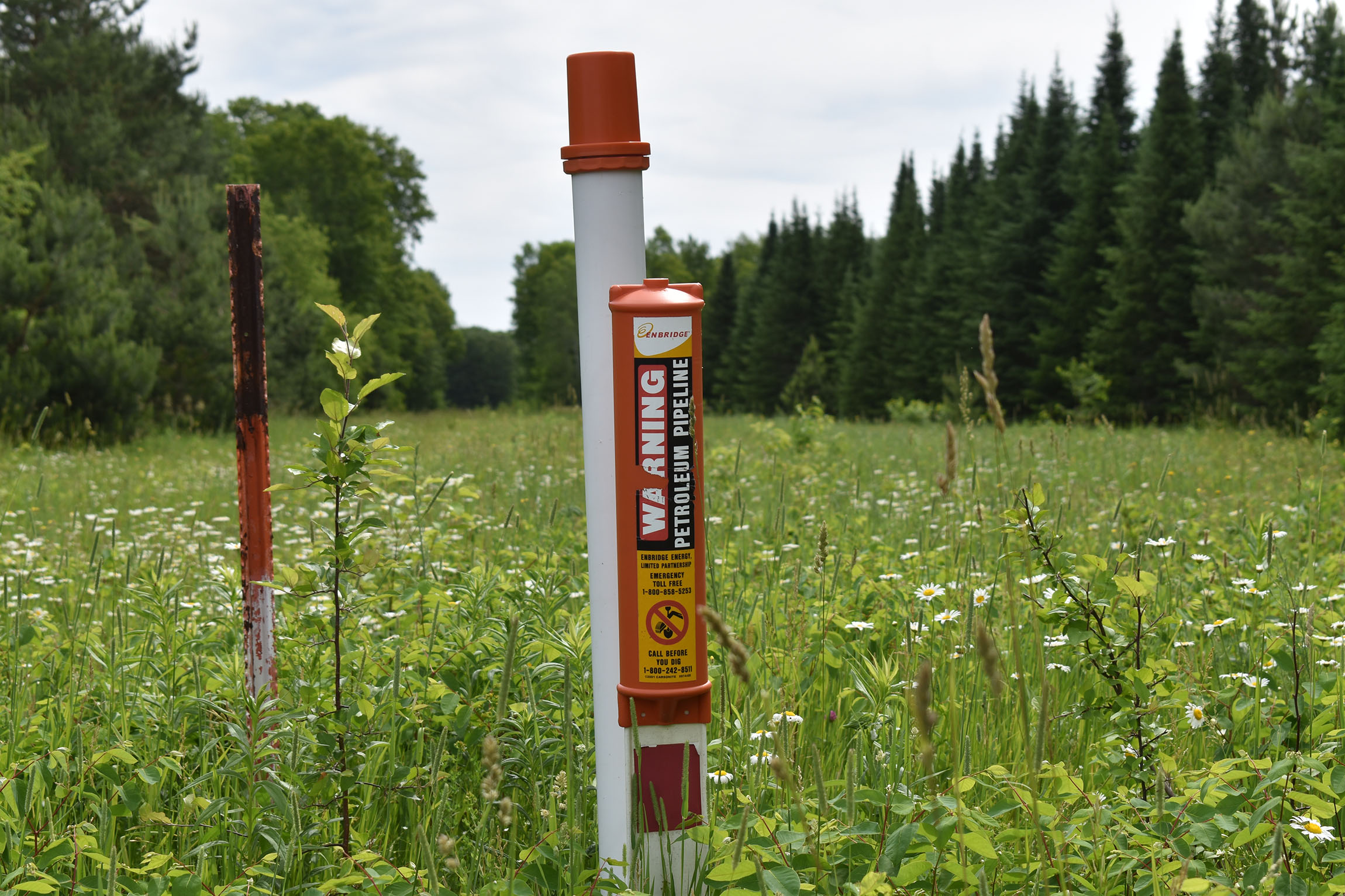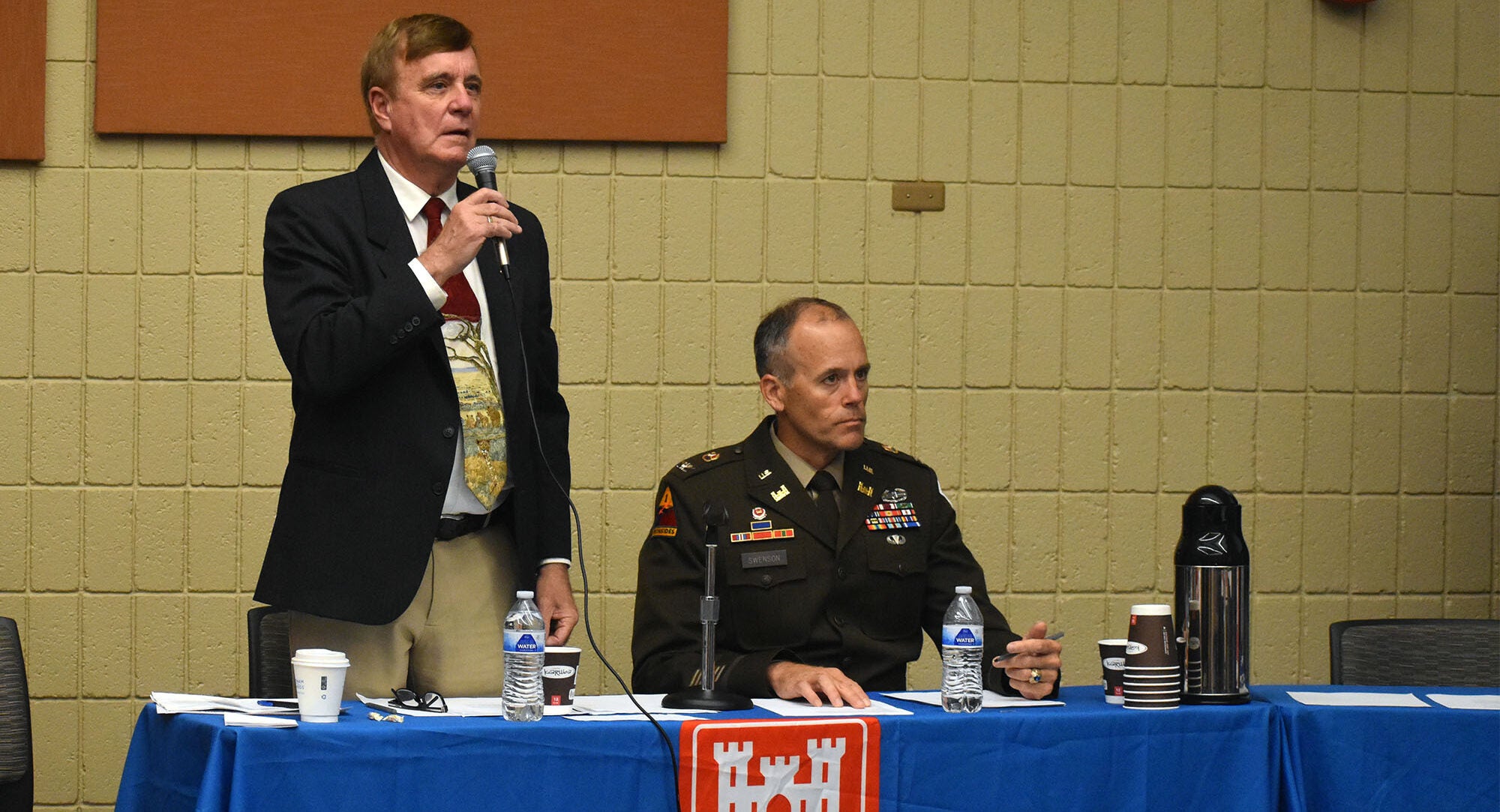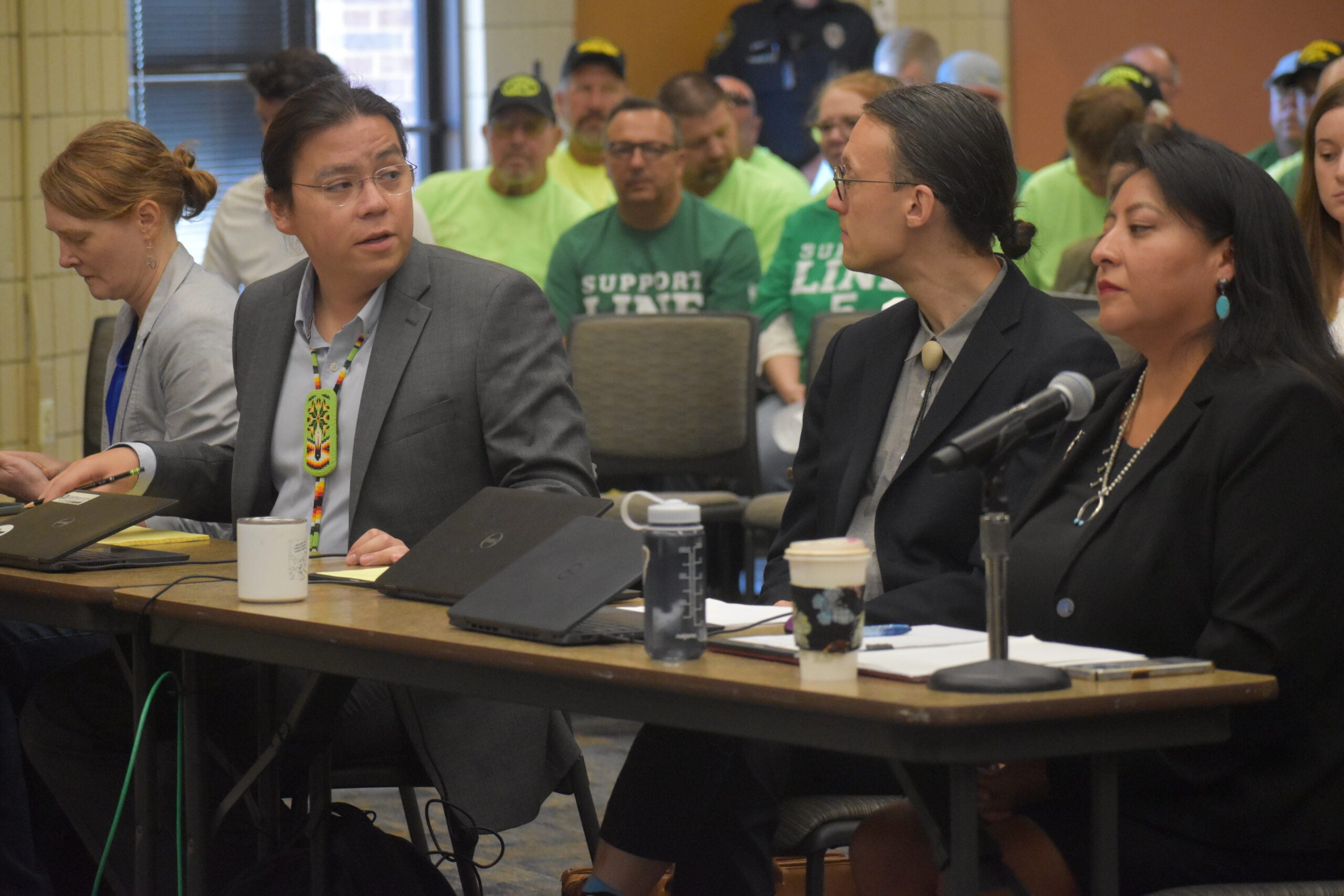A Canadian energy firm said Wednesday there’s no “credible scenario” where a significant rupture on a proposed reroute of its oil and gas pipeline would reach Lake Superior.
Enbridge said those are the findings of updated oil modeling conducted by its consultant RPS Group, a global professional services firm based in the United Kingdom. The report shared with the Wisconsin Department of Natural Resources on Monday examined more than 13,000 spill scenarios on its proposed route and other alternatives. It states the odds of Enbridge’s proposed route experiencing a significant or full-bore rupture represents a 1 in 15.7 million chance for any given year.
“In the one in 15 million chance there is a full-bore rupture on this segment, crude oil would not reach Lake Superior even after 48 hours with no emergency response at all,” Enbridge spokesperson Juli Kellner said in a statement. “In reality, the pipeline would be shut down and valves closed in 13 minutes or less and crews would be dispatched immediately to contain and clean up any spill.”
News with a little more humanity
WPR’s “Wisconsin Today” newsletter keeps you connected to the state you love without feeling overwhelmed. No paywall. No agenda. No corporate filter.
Enbridge is proposing to build a new 30-inch pipeline that would run roughly 41 miles around the Bad River Band of Lake Superior Chippewa’s reservation. The company is seeking to relocate the pipeline after the tribe sued Enbridge in 2019 to shut down and remove its Line 5 oil and gas pipeline from tribal lands. The pipeline carries up to 23 million gallons of Canadian crude oil and natural gas liquids per day from Superior across northern Wisconsin and Michigan to Sarnia, Ontario.
In response to the findings, Bad River Tribal Chairman Mike Wiggins, Jr. said he doesn’t trust data or science coming from Enbridge or its consultant. He said the findings highlight the need for review by federal regulatory agencies.
“It’s absolutely imperative this is driven by an environmental impact statement at a federal level so that the reserved water rights realm — the treaty-based notions of this forever home that we share as tribal people and with all of our non-tribal relatives — that the considerations for life here are taken into account with true science, not oil company propaganda,” Wiggins said.
The Army Corps of Engineers, which is reviewing federal permits for the project, has said that it’s conducting an environmental assessment that will determine the need for an environmental impact statement.
Wiggins said the area of the proposed reroute in Ashland and Iron counties is one where surface water and groundwater interact. He also highlighted the reservation witnessed a devastating flood in 2016 that’s only supposed to happen once every 500 years followed by a similar-sized storm in 2018. He questioned whether the analysis examined scenarios reflecting a range of volumes and weather conditions.
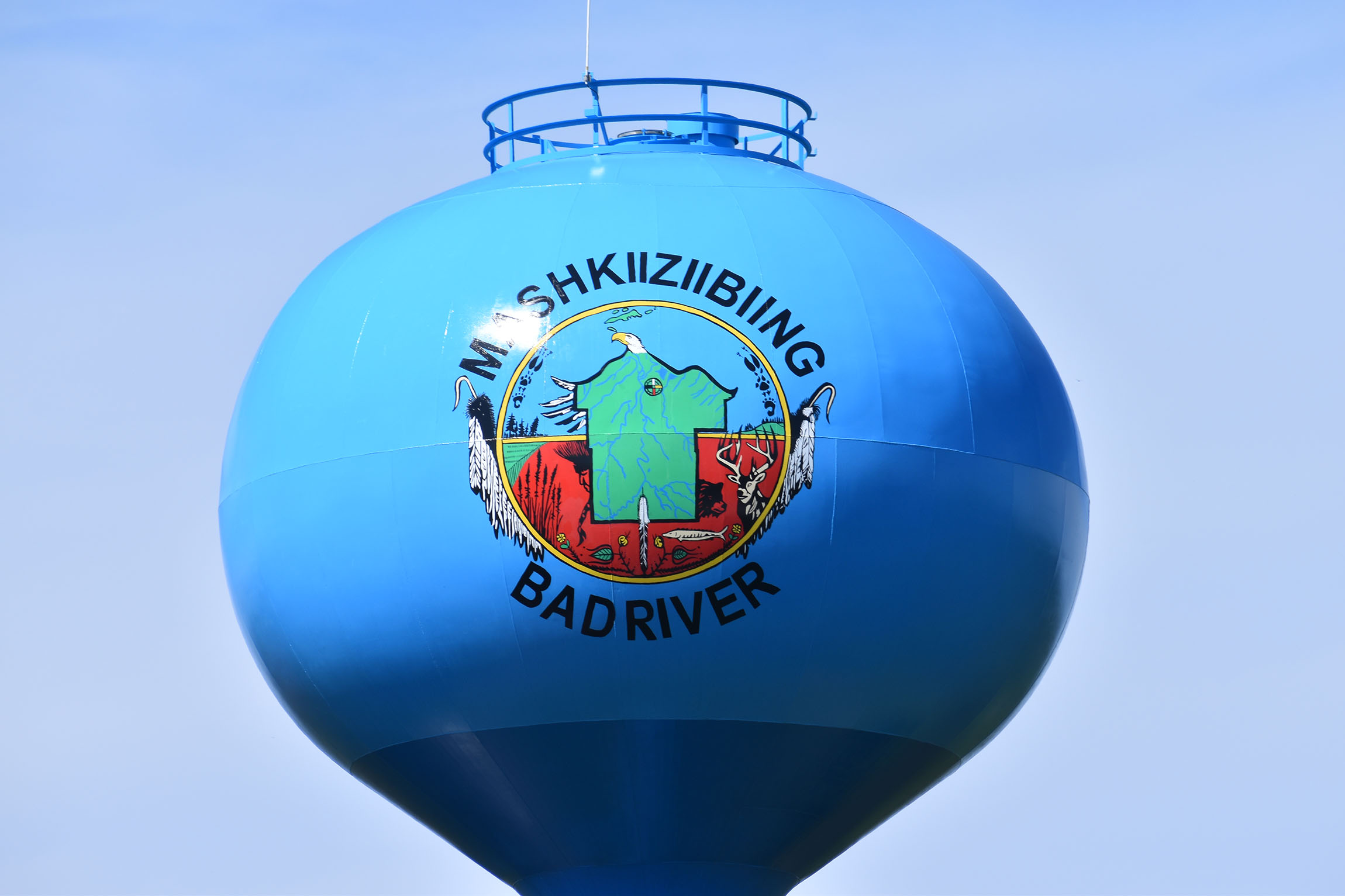
Enbridge said the report modeled a wide range of locations, environmental conditions and volumes of product under the spill scenarios. That includes areas where the proposed route crossed the Bad River and White River.
The report states it examined a range of spills from 334 to 1,911 barrels in size based on recent and historical spills. The consultant also examined significant ruptures at a maximum of 13,451 barrels on its proposed route and 26,684 barrels on its existing route. It also focused on the potential for oil to reach wild rice beds near the Kakagon-Bad River Sloughs, which hold national and international significance. They’re located between 22 and 45 miles of the Bad River and White River crossings.
RPS Group concluded oil moving downstream would “evaporate quickly” or end up on shorelines where it would continue to evaporate, degrade and be cleaned up by Enbridge. The firm added that successful emergency response measures would decrease the amount of oil moving downstream with either no oil or only a surface sheen predicted.
The modeling predicted spills at the Bad River and White River crossings would prevent oil from reaching wild rice beds, the Kakagon Sloughs and Lake Superior. Under modeling of no response to spills, oil took two to four days to reach Lake Superior under both high and low flows. RPS said the least likely spill scenarios that occurred in unfavorable conditions with no response for days showed the greatest risks to the environment.
Paul DeMain, chairman of the board of directors for the Indigenous group Honor the Earth, said the question for him is not if the pipeline leaks, but when.
“I don’t care to look at the probabilities,” DeMain said. “What I see is pipelines leaking here and pipelines bursting there and creating environmental hazards and polluting treaty resources and polluting public water resources and other things.”
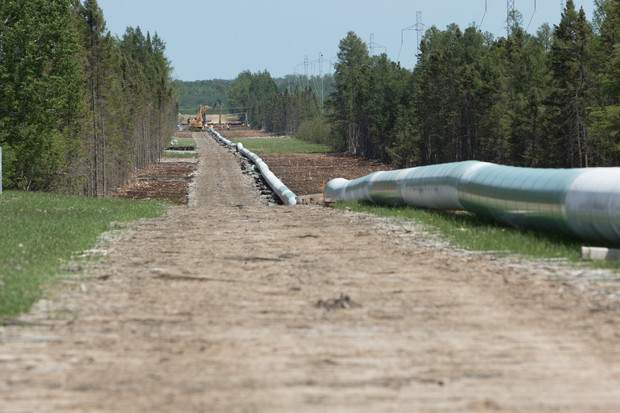
He pointed to spills in Michigan and Minnesota on Enbridge pipelines. The company experienced one of the largest spills on land in Michigan in 2010. In Minnesota, DeMain highlighted the release of nearly 300 million gallons of groundwater after crews ruptured three aquifers while building the company’s Line 3 replacement project. RPS Group also conducted spill modeling for that project.
Kellner said Enbridge has taken steps to prevent incidents similar to the spill near Marshall, Michigan. She added that aquifer issues with the Line 3 project occurred during construction and didn’t involve the pipe or drilling, but sheet metal piling used to reinforce the trench for worker safety.
“We sincerely regret this happened and are working with industry partners to improve procedures to prevent this from happening again,” Kellner said. “Enbridge has commissioned additional geotechnical investigations along the proposed Line 5 relocation route to prevent sheet pile installation from impacting an aquifer.”
Meanwhile, Line 5 has had around 30 spills that have released more than 1 million gallons of oil and natural gas liquids on land since 1968, according to federal pipeline safety data obtained by the National Wildlife Federation.
Despite those spills, Enbridge said it delivers about 30 percent of crude oil in North America with a record of safely delivering 99 percent or more than 4 billion gallons of oil in 2021, according to its website. The company said it’s invested more than $8 billion on maintenance, inspection and leak detection across its system. Kellner added Enbridge has increased staffing and the number of inline inspections conducted on its liquid pipelines using tools she referred to as mini-MRI machines.
Rob Lee, staff attorney for Midwest Environmental Advocates, noted the most recent modeling doesn’t examine the potential risks of spills along the entire pipeline.
“It’s silent on what that project facilitates, which is the continued operation of a 70-year-old pipeline that has leaked quite a bit over that lifespan right already,” Lee said. “What about the other portions of the line that are closer to Lake Superior?”
He also questioned whether its scenarios examined discharges to groundwater. Kellner said the modeling has been used to predict impacts of releases on land and surface water, which have been used extensively in the U.S. and internationally.
Project opponents say the company’s past history with spills demands the company be held to a higher standard as the Wisconsin DNR prepares a final environmental impact statement.
The U.S. Environmental Protection Agency has provided the agency with 200 recommendations to strengthen its review. Federal regulators say the state failed to fully analyze the risk of spills, tribal resources and treaty rights, the effects of climate change, and whether the project would violate state and tribal water quality standards.
Ben Callan, the DNR’s integration services section manager, said the agency is evaluating how to best incorporate the spill modeling into an updated environmental impact statement.
“We’re going to work with other entities who have an interest in the project, you know, regulatory agencies and stakeholders, government entities to look at analyze and evaluate the information,” Callan said.
The DNR has no explicit timeline on when it plans to release a final environmental review of the project.
Republican lawmakers, labor unions and the state’s largest business lobby have touted the 700 construction jobs that would be created through the rerouting. They have also underscored the $135 million economic impact it would create for the state, as well as the $36.5 million in property tax revenues that the company’s pipelines generate.
Enbridge experts have said in court filings that shutting down Line 5 would increase gas, diesel and jet fuel costs by an estimated $20 million each year in Wisconsin and $30 million annually in Michigan. Experts for the tribe dispute those findings.
In the meantime, the Bad River tribe’s lawsuit against Enbridge is ongoing. The company hopes to begin construction once it receives all necessary permits.
Wisconsin Public Radio, © Copyright 2025, Board of Regents of the University of Wisconsin System and Wisconsin Educational Communications Board.

